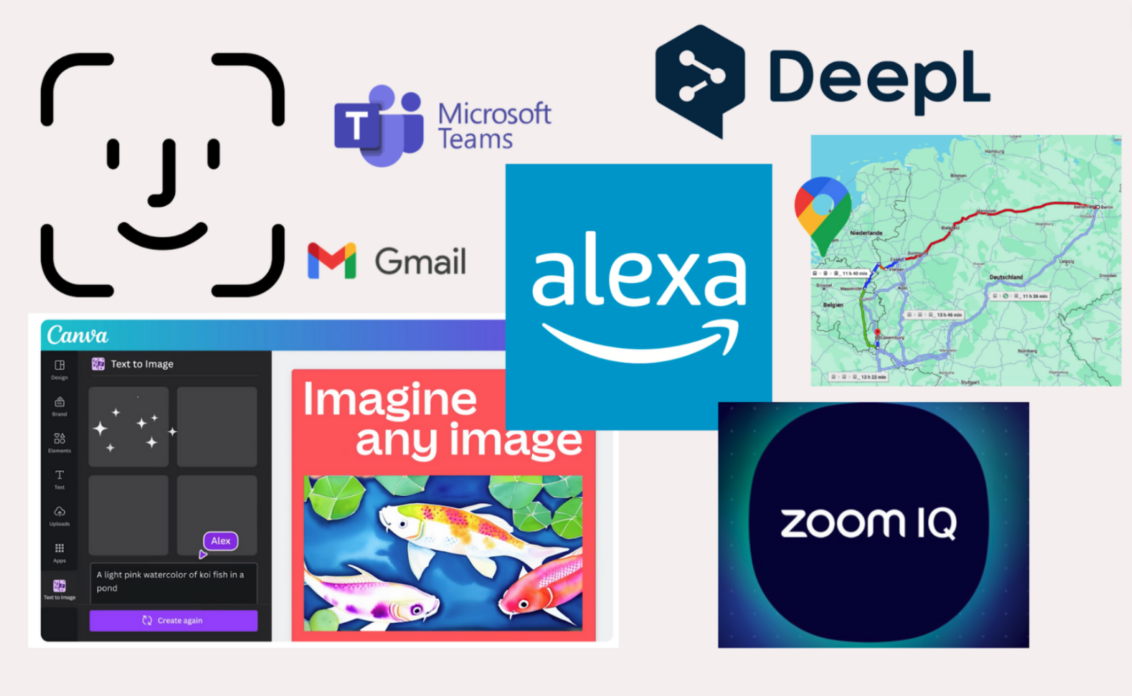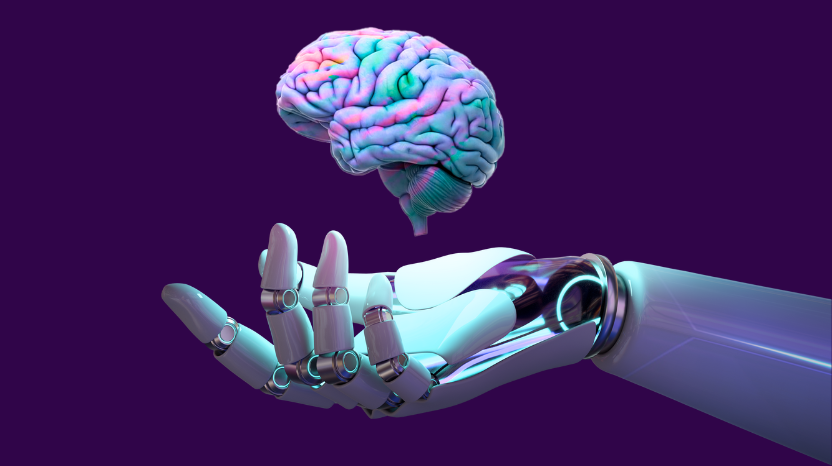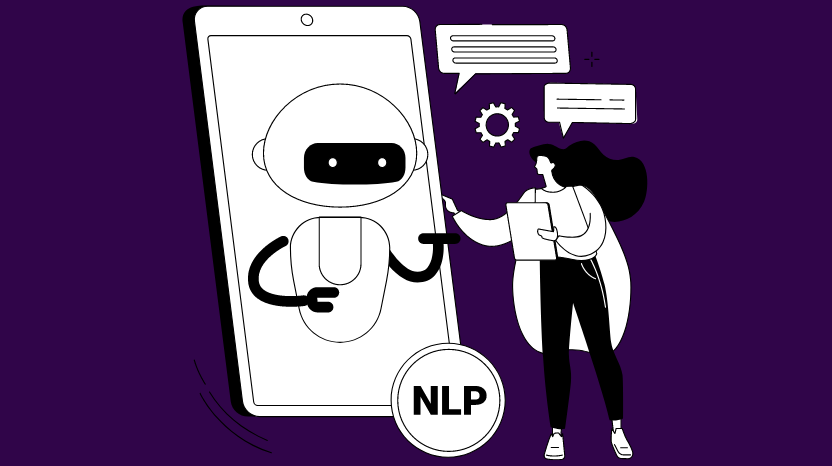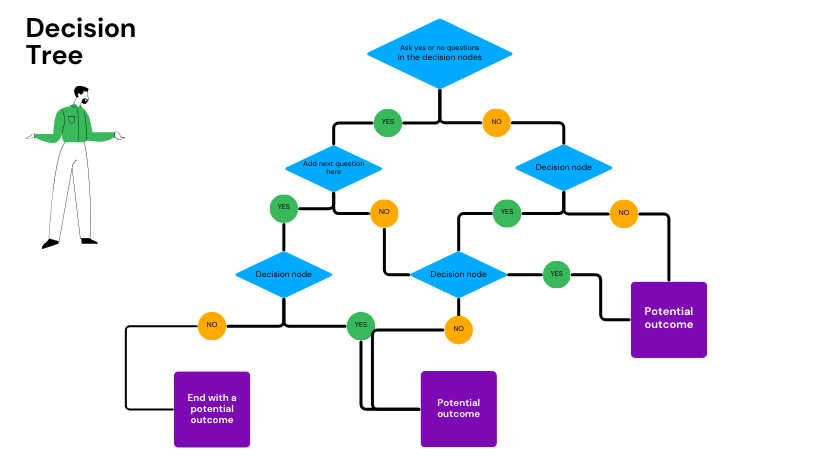Missed the boat on AI?
How companies are catching up
Artificial intelligence – we don’t need it. Many companies would probably have signed this sentence a year ago. ChatGPT had been released a few weeks earlier. Today, no company can avoid the question of what it is already using AI systems for. According to a Bitkom study, two thirds of companies consider AI to be the most important technology of the future. At the same time, 38 percent are concerned that they have missed the boat on new developments. They should know that it is not too late to start (and there is probably no alternative), because AI is here to stay and will change and shape almost every area of our working world in the coming years. Companies that are still unsure about how AI will affect their work can take a step-by-step approach. HR is an ideal area for this. I’ll come to why and how this can work in detail in a moment.
No AI is not a solution either
The first step, however, is to overcome general fears of AI. This can be achieved by consciously questioning and adapting our own mindset. Companies can accept that they do not yet understand everything. They can allow themselves to learn and try out new things. It also helps to realize that they are probably already using AI as a matter of fact without even realizing it – see the following illustration:
These examples also show that organizations do not have to immediately purchase a large, complex software package costing several million euros. Instead, they can start small and proceed step by step. In that way, they can gradually open up areas in which AI systems can bring them measurable improvements. In the Bitkom study mentioned above, for example, more than half of the companies using Artificial Intelligence highlighted the reduction of human error as one of the greatest benefits, followed by the acceleration of processes.
Improving HR work with AI
Especially in HR, AI systems can make work easier and bring benefits for both HR experts and employees. The following areas of application are already showing good results:
1. AI diagnostics: personality tests and skills analyses to gain deeper insights into employees’ strengths and development potential.
2. Employee development: AI-supported learning and development programs that are individually tailored to employees’ needs and career goals.
3. Recruitment: tailored job advertisements, talent acquisition, including automated CV analysis and pre-selection of suitable candidates.
4. Process automation: time tracking, leave management and onboarding.
5. Performance assessment.
6. Employee engagement and satisfaction: AI analysis of employee feedback and sentiment to identify trends and proactively address needs.
7. Diversity management: AI-supported analyses to promote diversity and inclusion in the company.
Ask the right questions* in advance (*here they come)
To get started in your company, you should first ask yourself which of the areas mentioned above would benefit most from AI. What specific challenges in diagnostics, employee development, recruitment and other HR processes do you want to address? Define specific, measurable goals that you want to achieve with the help of AI.
In the next step, look for possible providers. Ask yourselves: What experience and references do the various AI providers have specifically in the HR context? And: How do the functions of the AI tools on offer cover our specific HR requirements?
After a pre-selection, look at the details
- Data protection: how do the providers ensure the protection and confidentiality of employee data?
- User-friendliness and training requirements: How user-friendly are the tools and what level of training is required for the HR team?
- System integration and technical requirements: How can the AI tools be integrated into our existing HR infrastructure?
- Provider support and technical maintenance: What support does the provider offer for technical or usage-related issues?
- Risk management and data security: What security measures and emergency strategies are implemented for the AI tools?
Then focus once again on your resources, goals and values. Weigh up the costs and benefits: what return on investment can you expect from using the AI tools? Ethical questions should also be discussed at this point at the latest: How do you ensure that the AI solutions comply with ethical standards and make decisions free from bias? – Many providers of AI systems have dealt intensively with the legal and ethical framework conditions in recent years and can provide support here.
Address resistance within the workforce and create a shared understanding of how Artificial Intelligence can be used in the company and where the (current) boundaries lie. At the same time, you can contribute to a better understanding of the technology and reduce fears with further training programs. (Spoiler: zortify also offers coaching on AI. 🤓) Give employees the freedom they need and encourage them to learn more about AI on their own. And finally: start small – with pilot projects and hands-on tools that don’t require time-consuming implementation and allow you to exit at any time. Start with one aspect of HR work, learn from the experience and then gradually expand the application as the technology benefits you.
Conclusion
The sudden rise and rapid development of Artificial Intelligence has overwhelmed many companies. But as with all new technologies, it’s perfectly okay not to be one of the first, the early adopters. But it is not good to permanently turn a blind eye to new developments and opportunities. Especially not if they benefit the company and the people who put their skills and time at the service of the organization. Find out what AI can do for you in specific terms. Try things out, reflect, adapt and, as in other areas of life, trust your common sense. It will be a good compass for you when dealing with AI and navigate you through the fascinating possibilities that new technology offers.
AI vs. Human Intelligence
Examining the differences between AI and Human Intelligence, and how they can work together to drive Innovation. Artificial intelligence (AI) has been a hot topic in recent years, with advancements in technology and machine learning leading to significant improvements.
Building Trust with Explainable AI: Techniques and Approaches
As AI becomes more pervasive in our lives, it’s becoming increasingly important to understand how these systems work and to be able to trust their decisions. Explainable AI (XAI) is a growing field that aims to create more transparent and interpretable machine learning models.
NLP 101: A Beginner’s Guide to Natural Language Processing
Natural Language Processing (NLP) is a field of study that focuses on analysis and synthesis of human language. NLP is a fascinating and rapidly evolving field with a wide range of applications, from chatbots and virtual assistants to sentiment analysis and machine translation.
NLP in Business
How Natural Language Processing is Transforming Customer Service, Marketing, and Sales
As businesses become more customer-centric, understanding customer needs and wants is becoming increasingly important. Natural Language Processing (NLP) is a branch of Artificial Intelligence (AI) that is revolutionizing the way businesses interact with their customers. By analyzing language data, NLP enables businesses to gain a deeper understanding of their customers, improve communication, and automate processes.
Here are some ways that NLP is transforming customer service, marketing, sales, and even the workplace:
Improving Customer Service Interactions
NLP is being used to analyze customer feedback and interactions to improve the overall customer experience. By analyzing customer feedback in real time, businesses can identify common pain points and issues and address them promptly. NLP can also be used to automate customer service interactions through chatbots and virtual assistants, reducing wait times and providing 24/7 support.
Automating Marketing and Sales Processes
NLP is being used to automate marketing and sales processes, allowing businesses to personalize their messaging and improve customer engagement. By analyzing customer interactions and (meta)data, AI and NLP can generate personalized recommendations and product suggestions. This level of personalization can improve customer retention and loyalty, and increase revenue.
Gaining Insights from Unstructured Data
NLP is also being used to analyze unstructured data, such as social media comments and reviews, to gain insights into customer sentiment and preferences. By analyzing this data, businesses can gain a deeper understanding of their customers and adjust their marketing and sales strategies accordingly.
Challenges and Considerations
While NLP has many benefits for businesses, there are also challenges and considerations to be aware of. For example, NLP algorithms can be biased, reflecting the biases of their creators and the data they are trained on. This can result in unfair or discriminatory outcomes. Additionally, NLP may not always accurately capture the nuances of human language, leading to errors or misunderstandings.
NLP in business
At Zortify, we believe that natural language processing (NLP) is a critical tool in driving better decision-making through artificial intelligence. That’s why we’ve built our company around NLP and its applications in human experience management (HXM).
Our Zortify products are based on the latest research and practical expertise in Data & Computer Science, NLP, Visual Computing, Psychology, and People Analytics. We believe that this multidisciplinary approach is key to developing usable and explainable AI solutions that truly make a difference.
One of our primary applications of NLP is in making active listening scalable for organizations across Europe. Our technology enables individuals to express themselves in their own words, whether it’s for personnel selection, customer/employee feedback, or analyzing an entire organization’s culture. By leveraging NLP, we can capture and understand the nuances of human language in a way that wasn’t previously possible.
Conclusion
NLP is transforming the way businesses interact with their customers, enabling them to gain a deeper understanding of customer needs and wants, improve communication, and automate processes. As with any technology, there are considerations and challenges to be aware of. However, by using NLP responsibly and ethically, businesses can improve the overall customer experience and drive growth.
NLP 101: A Beginner’s Guide to Natural Language Processing
Natural Language Processing (NLP) is a field of study that focuses on analysis and synthesis of human language. NLP is a fascinating and rapidly evolving field with a wide range of applications, from chatbots and virtual assistants to sentiment analysis and machine translation.
AI vs. Human Intelligence
Examining the differences between AI and Human Intelligence, and how they can work together to drive Innovation. Artificial intelligence (AI) has been a hot topic in recent years, with advancements in technology and machine learning leading to significant improvements.
Building Trust with Explainable AI: Techniques and Approaches
As AI becomes more pervasive in our lives, it’s becoming increasingly important to understand how these systems work and to be able to trust their decisions. Explainable AI (XAI) is a growing field that aims to create more transparent and interpretable machine learning models.
XAI: Building Trust and Transparency in Machine Learning Models
As AI becomes more pervasive in our lives, it’s becoming increasingly important to understand how these systems work and to be able to trust their decisions. Explainable AI (XAI) is a growing field that aims to create more transparent and interpretable machine learning models. In this article, we’ll explore what XAI is, why it’s important, and how techniques such as decision trees and rule-based systems can be used to build more transparent and trustworthy AI systems.
Introduction
Artificial intelligence (AI) is increasingly being used in a wide range of applications, from chatbots to autonomous vehicles. However, as AI becomes more ubiquitous, concerns have arisen about its transparency and accountability. In particular, there is a growing demand for AI systems that are explainable. Meaning that they can be understood and interpreted by humans. This article will explore the concept of explainable AI, including why it’s important for building trust in AI systems. And how techniques such as decision trees and rule-based systems can be used to create more transparent and interpretable models.
What is Explainable AI?
Explainable AI (XAI) is a subfield of AI that focuses on developing methods and techniques to make AI systems more transparent and interpretable. The goal of XAI is to enable humans to understand the reasoning behind AI decisions and action. Which is critical for building trust in these systems. XAI is especially important in high-stakes applications. Such as healthcare and finance, where decisions made by AI systems can have significant consequences.
Why is Explainable AI Important?
The lack of transparency and interpretability in AI systems is a major obstacle to their widespread adoption. If people cannot understand how an AI system is making decisions or why it is taking a particular action, they are unlikely to trust or rely on that system. This is particularly true in applications where human lives or livelihoods are at stake.
Another reason why XAI is important is that it can help identify and mitigate biases in AI systems. Many machine learning models are trained on biased data, which can lead to discriminatory outcomes. By making AI systems more transparent and interpretable, it becomes easier to identify and correct biases in these models.
How can we achieve Explainable AI?
Several techniques and approaches can be used to achieve XAI. One common approach is to use decision trees. Which are a type of model that creates a tree-like structure of decisions and their possible consequences. Decision trees are easy to understand and can be used to trace the reasoning behind AI decisions.
Exemple of decision tree
Another approach is to use rule-based systems, which are sets of rules that define the conditions under which certain actions should be taken. Rule-based systems are often used in expert systems. Which are AI systems that simulate the decision-making capabilities of a human expert in a particular domain.
A third approach is to use model-agnostic techniques, such as LIME (Local Interpretable Model-Agnostic Explanations) or SHAP (Shapley Additive exPlanations). These techniques can be used with any type of machine learning model and provide local explanations for individual predictions.
Finally
Explainable AI is critical for building trust and transparency in AI systems. By making AI systems more transparent and interpretable, we can identify and correct biases, build trust with users, and ensure that AI is used ethically and responsibly. There are many techniques and approaches to achieving XAI, and organizations should carefully consider their options when implementing AI systems.
NLP 101: A Beginner’s Guide to Natural Language Processing
Natural Language Processing (NLP) is a field of study that focuses on analysis and synthesis of human language. NLP is a fascinating and rapidly evolving field with a wide range of applications, from chatbots and virtual assistants to sentiment analysis and machine translation.
AI vs. Human Intelligence
Examining the differences between AI and Human Intelligence, and how they can work together to drive Innovation. Artificial intelligence (AI) has been a hot topic in recent years, with advancements in technology and machine learning leading to significant improvements.
Natural Language Processing in Business
As businesses become more customer-centric, understanding customer needs and wants is becoming increasingly important. Natural Language Processing (NLP) is a branch of Artificial Intelligence (AI) that is revolutionizing the way businesses interact with their customers.
NLP 101: A Beginner’s Guide to Natural Language Processing
Natural Language Processing (NLP) is a field of study that focuses on analysis and synthesis of human language. NLP is a fascinating and rapidly evolving field with a wide range of applications, from chatbots and virtual assistants to sentiment analysis and machine translation. In this beginner’s guide to NLP, we’ll provide an overview of what NLP is, how it works, and some common applications of NLP.
What is NLP?
NLP is a branch of artificial intelligence that focuses on the processing of human language. The goal of NLP is to enable computers to understand, interpret, and generate human language in a way that is natural and intuitive. NLP involves a wide range of techniques, including machine learning, deep learning, and statistical analysis.
At its core, NLP applies computational algorithms to language data to extract meaning and insights from the data. These algorithms are designed to simulate the way humans process language, by breaking down language into its parts and analyzing the relationships between those parts.
How Does NLP Work?
NLP algorithms use various techniques to analyze and understand human language. These techniques include natural language understanding, which involves the analysis of human language to extract meaning and context, and natural language generation, which involves the generation of human-like language by computers.
Natural Language Understanding
Natural language understanding involves the analysis of text data to extract meaning and context. This involves a wide range of techniques, including:
– Tokenization: Breaking text into individual words, phrases, or other meaningful units.
– Part-of-speech tagging: Assigning parts of speech to individual words (e.g., noun, verb, adjective).
– Named entity recognition: Identifying and classifying entities mentioned in the text (e.g., people, places, organizations).
– Dependency parsing: Analyzing the relationships between words in a sentence to identify the subject, object, and other components.
– Sentiment analysis: Analyzing the emotional tone of the text.
– Topic modeling: Identifying the underlying topics or themes present in a document or set of documents.
Natural Language Generation
Natural language generation involves the creation of human-like language by computers. This can be used for a wide range of applications, including chatbots, virtual assistants, and automated report generation. Natural language generation involves a wide range of techniques, including:
– Text planning: Determining the content and structure of the generated text.
– Sentence planning: Generating individual sentences based on the content and structure determined in the text planning stage.
– Surface realization: Converting the sentence plan into actual text.
Applications of NLP
NLP has a wide range of applications in various fields, including chatbots, virtual assistants, sentiment analysis, and machine translation.
Chatbots and Virtual Assistants
One of the most common applications of NLP is chatbots and virtual assistants. Chatbots and virtual assistants use NLP algorithms to understand and respond to user input naturally and intuitively. This makes them useful for a wide range of applications, including customer service, personal assistants, and more.
Sentiment Analysis
Sentiment analysis is another common application of NLP. It involves the analysis of text data to determine the emotional tone of the text. This can be useful for a wide range of applications, including market research, social media analysis, and customer feedback analysis.
Machine Translation
NLP is also used in machine translation, which involves the translation of text from one language to another. NLP algorithms are used to analyze and understand the text in one language, and then generate the equivalent text in another language.
Conclusion
Natural Language Processing (NLP) is a fascinating and rapidly evolving field with a wide range of applications. From chatbots and virtual assistants to sentiment analysis and machine translation, NLP is transforming the way we interact with computers and each other. By understanding the basics of NLP, you can gain a better understanding of this exciting field and the many ways in which it is changing the world.
AI vs. Human Intelligence: Understanding the advantages and shortcomings of Artificial Intelligence
Examining the differences between AI and Human Intelligence, and how they can work together to drive Innovation. Learn how AI can augment human abilities in decision-making and problem-solving.
Building Trust with Explainable AI: Techniques & Approaches
As AI becomes more pervasive in our lives, it’s becoming increasingly important to understand how these systems work and to be able to trust their decisions. Explainable AI (XAI) is a growing field that aims to create more transparent and interpretable machine learning models.
Natural Language Processing in Business
As businesses become more customer-centric, understanding customer needs and wants is becoming increasingly important. Natural Language Processing (NLP) is a branch of Artificial Intelligence (AI) that is revolutionizing the way businesses interact with their customers.








